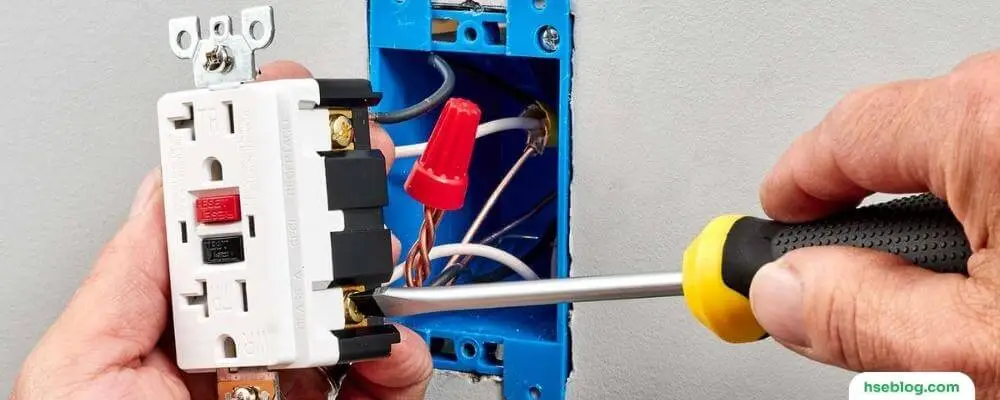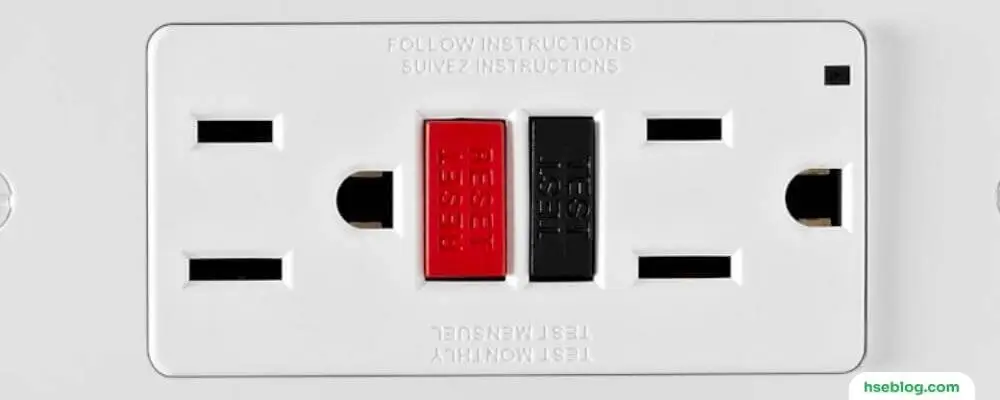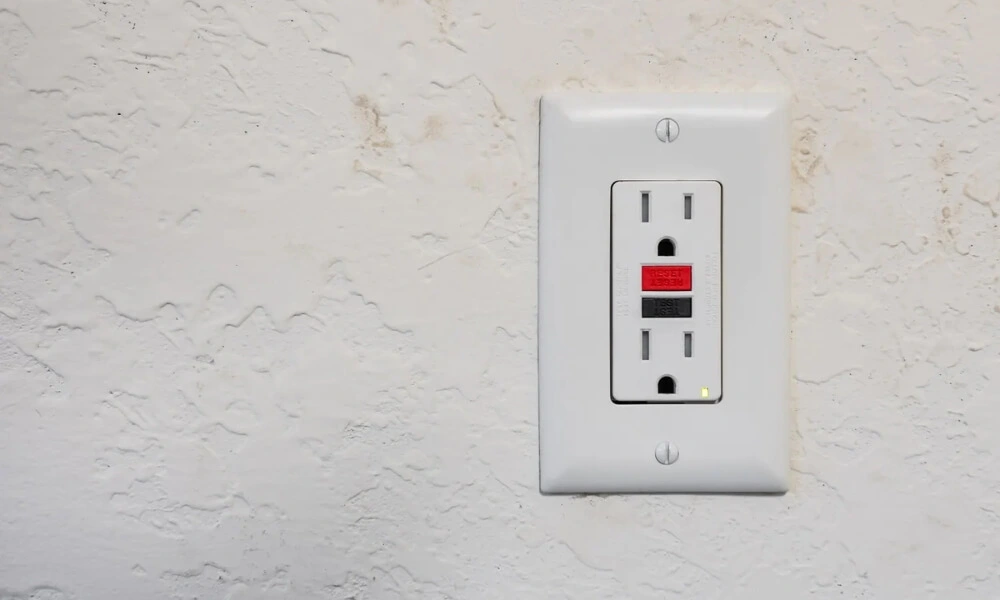GFCI, or Ground Fault Circuit Interrupter, is a device that helps to protect people from electric shock hazards. It is an essential safety measure for any electrical system, especially where water and electricity may come into contact, such as in bathrooms, kitchens, and outdoor spaces.
This blog will look closely at GFCI and explain why it is important for electrical safety. We will cover what a GFCI is, how it works, and the available types of GFCIs. We will also discuss the benefits of installing GFCIs in your home or workplace and provide tips for maintaining and testing your GFCI devices to ensure they are functioning correctly. By the end of this blog, you will better understand the critical role that GFCIs play in electrical safety and the steps you can take to protect yourself and your loved ones from electrical hazards.
How do Ground Fault Circuit Interrupters (GFCI) Work?
A Ground Fault Circuit Interrupter (GFCI) is an electrical safety device designed to protect against electrical shock by interrupting the flow of electricity when it detects a ground fault.
The basic principle of how a GFCI works are that it constantly monitors the current flow through a circuit. It does this by comparing the amount of current flowing out of the circuit to the amount of current flowing back into the circuit. When the GFCI detects an imbalance in the current flow, it assumes that there is a ground fault and immediately interrupts the flow of electricity to prevent electrical shock. This can happen in as little as 1/40th of a second.
The GFCI works by using a small transformer built into the device. This transformer has two coils of wire – a primary coil and a secondary coil. The primary coil is connected to the incoming power source, while the secondary coil is connected to the circuit protected by the GFCI.
When the GFCI is first turned on, the current flow through the primary and secondary coils should be equal. If there is an imbalance in the current flow, some electricity flows through an unintended path, such as through a person’s body or the ground. When the GFCI detects an imbalance in the current flow, it immediately interrupts the flow of electricity by opening a switch connected to the circuit. This stops the flow of electricity and prevents electrical shock.
In summary, a Ground Fault Circuit Interrupter (GFCI) works by constantly monitoring the current flow through a circuit and interrupting the flow of electricity when it detects a ground fault. It does this by using a small transformer with two wire coils to detect an imbalance in the current flow and quickly opening a switch to prevent electrical shock.

GFCI vs AFCI
Ground Fault Circuit Interrupters (GFCI) and Arc Fault Circuit Interrupters (AFCI) are safety devices used to protect electrical systems in residential and commercial buildings. While both devices are designed to enhance electrical safety, they serve different purposes and protect against different types of hazards.
GFCI (Ground Fault Circuit Interrupter):
- Purpose: GFCIs are designed to protect people from electrical shocks caused by ground faults, which occur when electrical current inadvertently flows through an unintended path, like a person’s body.
- Function: GFCIs continuously monitor the electrical current flowing between the hot and neutral wires in a circuit. If an imbalance indicates a ground fault, the GFCI quickly cuts off power to the circuit to prevent injury from electrical shock.
- Applications: GFCIs are primarily used in areas where water or moisture is present, such as bathrooms, kitchens, laundry rooms, garages, and outdoor outlets. They are also required by building codes in specific locations within a building.
AFCI (Arc Fault Circuit Interrupter):
- Purpose: AFCIs are designed to protect against electrical fires caused by arc faults. Arc faults can occur when damaged or worn wiring, loose connections, or other issues create high-temperature electrical arcs, which can ignite surrounding materials and cause fires.
- Function: AFCIs continuously monitor the electrical current in a circuit for signs of arcing. If an arc fault is detected, the AFCI quickly cuts off power to the circuit to prevent a fire from starting.
- Applications: AFCIs are typically used in living areas, bedrooms, and other locations where electrical fires are more likely to start due to worn or damaged wiring. They are also required by building codes in specific areas within a building.
| Feature | GFCI | AFCI |
|---|---|---|
| Purpose | Protect against electrical shocks | Protect against electrical fires |
| Function | Detects ground faults | Detects arc faults |
| Detection | Monitors current imbalance between hot and neutral wires | Monitors signs of arcing in electrical current |
| Response | Cuts off power when ground fault detected | Cuts off power when arc fault detected |
| Applications | Areas with water or moisture (e.g., bathrooms, kitchens, laundry rooms, garages, outdoor outlets) | Living areas, bedrooms, and other locations with potential worn or damaged wiring |
| Building Codes | Required in specific locations within a building | Required in specific areas within a building |
| Safety Benefit | Prevents injury from electrical shocks | Prevents electrical fires |
In summary, GFCIs and AFCIs serve different purposes in electrical safety:
- GFCIs protect people from electrical shocks caused by ground faults, particularly in areas with water or moisture.
- AFCIs protect against electrical fires caused by arc faults, primarily in living areas where worn or damaged wiring is more likely to be found.
Both types of devices are essential for comprehensive electrical safety in homes and commercial buildings. In some cases, a combination of GFCI/AFCI breakers or outlets, known as Dual Function Circuit Interrupters (DFCI), can provide both types of protection in a single device.

Types Of Ground Fault Circuit Interrupters (GFCI)
There are several types of GFCIs available on the market, including:
- Receptacle GFCI: This type of GFCI is installed directly into a wall outlet, replacing the standard outlet. It monitors the flow of electricity in the circuit and trips the circuit if it detects a ground fault.
- Circuit Breaker GFCI: This type of GFCI is installed in the electrical panel and protects the entire circuit. It monitors the electrical current flowing through the circuit and trips it if it detects a ground fault.
- Portable GFCI: This type of GFCI is a portable device plugged into an existing outlet to provide ground fault protection. It is commonly used for outdoor equipment, such as power tools or extension cords.
- Combination GFCI: This type of GFCI combines the features of a standard circuit breaker and a GFCI receptacle. It is designed to provide protection to both the circuit and the outlet.
- GFCI with Self-Test: This type of GFCI includes a self-testing function that regularly checks the integrity of the device’s internal components. This helps ensure the device functions properly and provides reliable protection against electrical shock.
Overall, the type of GFCI that suits your needs will depend on the specific application and requirements. It is important to consult with a qualified electrician to determine the most appropriate type of GFCI for your particular situation.
Importance of GFCI for Electrical Safety
Ground Fault Circuit Interrupter (GFCI) devices are essential for electrical safety in residential and commercial settings. A GFCI is designed to quickly cut off power to a circuit when it detects an imbalance in the electrical current between the hot and neutral wires, which could indicate a ground fault or short circuit. This helps prevent electrical shocks and fires and protects sensitive electronic equipment. The importance of GFCI for electrical safety can be summarized in several key points:
- Protection against electrical shocks: GFCIs help to prevent serious injuries or fatalities caused by electrical shocks. They can protect people from dangerous situations where electricity could flow through their bodies by shutting off power when a ground fault occurs.
- Prevention of electrical fires: Electrical faults can lead to overheating, sparking, and, ultimately, fires. GFCIs can mitigate this risk by quickly disconnecting power when a fault is detected, reducing the likelihood of a fire starting due to electrical issues.
- Safety in wet or damp environments: GFCIs are particularly important in areas where water or moisture is present, such as bathrooms, kitchens, laundry rooms, garages, and outdoor outlets. Water increases the risk of electrical shocks and short circuits, so GFCIs are crucial for safety in these areas.
- Compliance with building codes and regulations: Many jurisdictions require GFCI protection in specific areas of residential and commercial buildings, according to their building codes and electrical regulations. Ensuring GFCI compliance helps property owners and occupants maintain a safe electrical environment.
- Protection of sensitive electronics: Electrical surges or ground faults can damage sensitive electronic equipment. GFCIs can help protect these devices by cutting off power when a fault is detected, preventing damage and potential data loss.
- Cost-effective solution: GFCIs are an affordable and effective way to increase electrical safety. Installing GFCIs in designated areas can be a relatively low-cost investment that provides long-term safety benefits for occupants.
- User-friendly: GFCIs are designed with user safety in mind. They usually feature a test button to verify proper functioning and a reset button to restore power after clearing a fault. This makes it easy for users to ensure their GFCI protection works correctly.
In conclusion, GFCI devices are vital for maintaining electrical safety in homes, businesses, and other environments. They offer protection against electrical shocks, prevent fires, ensure compliance with building codes, and safeguard sensitive electronics, making them an essential electrical system component.

Testing and maintenance of GFCI
Regular testing and maintenance of Ground Fault Circuit Interrupter (GFCI) devices are crucial to ensure they provide effective protection against electrical shocks. Here are the steps for testing and maintaining GFCI outlets and breakers:
GFCI Outlets:
- Visual inspection: Check for any visible damage to the outlet, such as cracks, burn marks, or discolouration. Call a qualified electrician to replace the outlet if you find any damage.
- Test function: GFCI outlets typically have “TEST” and “RESET” buttons. To test the outlet, plug in a small appliance or lamp you know works. Press the “TEST” button on the GFCI outlet. The appliance or lamp should turn off, indicating the GFCI has decreased power to the outlet. If it doesn’t, the GFCI outlet may be faulty and should be replaced by a qualified electrician.
- Reset function: Press the “RESET” button on the GFCI outlet after testing. The appliance or lamp should turn back on, confirming that power has been restored to the outlet.
GFCI Breakers:
- Visual inspection: Check the breaker panel for any signs of damage or wear, such as discolouration or burn marks around the GFCI breaker.
- Test function: GFCI breakers also have a “TEST” button. Press the “TEST” button on the GFCI breaker. The breaker should trip, cutting off power to the circuit it protects. If it doesn’t trip, the GFCI breaker may be faulty and should be replaced by a qualified electrician.
- Reset function: After testing, flip the breaker back to the “ON” position to restore power to the circuit.
Frequency of Testing:
It is generally recommended to test GFCI devices monthly to ensure their proper functioning. More frequent testing may be necessary in high-use or harsh environments.
Maintenance Tips:
- Keep GFCI devices clean and free of debris.
- Do not paint over GFCI outlets or breakers, which can hinder their function.
- If you experience frequent tripping, consult a qualified electrician to inspect your electrical system for possible issues.
- When replacing or adding new GFCI devices, always hire a qualified electrician to ensure proper installation and compliance with local building codes.
By regularly testing and maintaining GFCI devices, you can help ensure the continued safety of your home or building’s electrical system and protect against the risk of electrical shocks.
Conclusion
Ground Fault Circuit Interrupters (GFCIs) are critical safety devices that protect individuals from electrical hazards. By constantly monitoring the flow of electricity in a circuit and detecting any imbalances or irregularities, GFCIs can quickly and automatically cut off the power to prevent electric shocks, fires, and other dangerous situations.
Whether you are a homeowner, a business owner, or an electrical professional, it is crucial to understand the importance of GFCIs and to ensure that they are properly installed and maintained in all areas where electrical devices and equipment are used. Promoting electrical safety can prevent accidents, injuries, and even fatalities and ensure that our homes and workplaces remain safe and secure.

